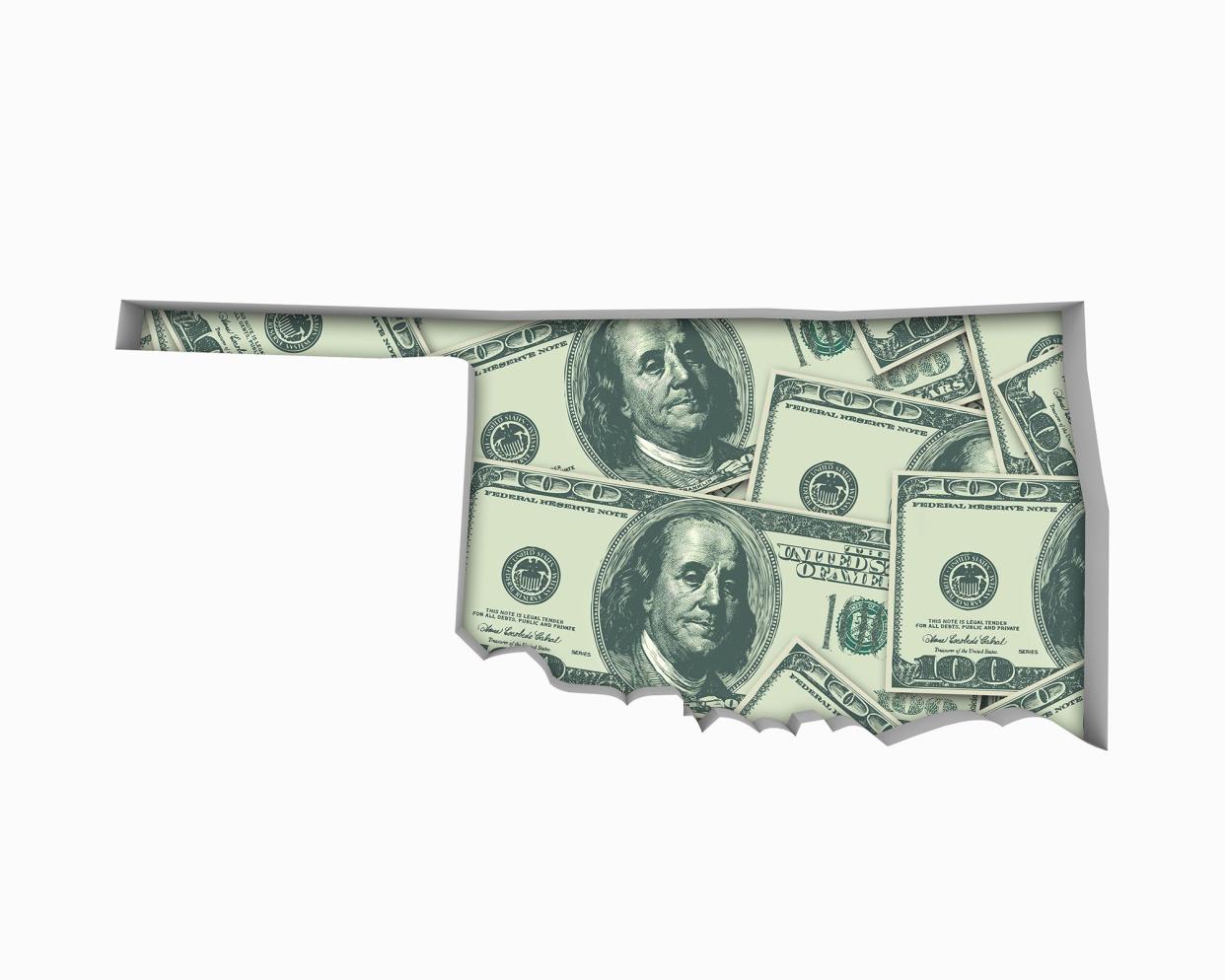Oklahoma lawmakers, Gov. Stitt at odds over how much money the state has to spend

- Oops!Something went wrong.Please try again later.
Depending on whose numbers you believe, the state has either half a billion dollars in extra funds or only a paltry $250 million extra to spend for the next fiscal year.
Numberswise, Gov. Kevin Stitt is at the high end. He said the state has more than $450 million extra to spend and can easily afford a cut in the state income tax.
“Revenue has gone up again. We’re $457 million up,” Stitt told the Oklahoma Council of Public Affairs recently. “A quarter-of-point tax cut, year one, is about $88 million; year two is about $250 (million). So we need to do a quarter-of-a-point back to the consumer.”
Senate Appropriations Chairman Roger Thompson, R-Okema, however, is more skeptical. He believes the revenue increase is lower — much lower.
"When you pull out the one-time expenditures, the state has a little more than $264.7 million in recurring revenue," Thompson said Thursday. "It's not as rosy as the governor thinks."
Thompson said the governor's figures include money from the revenue stabilization fund, the Legacy Capital fund and unspent state recovery funds, money earmarked for one-time expenses. "We want to make sure we deal with recurring funds and not one-time money," he said.
The debate comes just about six months after lawmakers signed off on the largest budget in state history: $12,866,390,628 for Fiscal Year 2024. The FY24 budget included $590 million in supplemental funding and more than $50 million in federal American Rescue Plan Act funds.
Which estimates will the Oklahoma Legislature use when building the state budget?
While the debate over just how much the state has to spend will undoubtedly continue through the 2024 legislative session, Thompson said the Senate will base its budget numbers off the February report from the State Board of Equalization.
The equalization board — which includes Stitt, Lt. Gov. Matt Pinnell, Auditor and Inspector Cindy Byrd, Treasurer Todd Russ, state schools Superintendent Ryan Walters and Board of Agriculture President Blayne Arthur — meets every December to develop a preliminary estimate of expected revenue. The board meets again in February for its final certification.
More: Oklahoma Senate plans to end state budget secrecy. Will it work?
"The board, mainly through the efforts of the Oklahoma Tax Commission, uses an econometric model to predict the revenue that will be received by the state between July 1, 2024, and June 30, 2025," former House Speaker Steve Lewis wrote in a posting on the Oklahoma Policy Institute's website.
Under the Oklahoma Constitution, the state Legislature can only spend 95 percent of the amount certified by the equalization board.
During its December meeting the equalization board's estimate for the general revenue fund was a positive one at $8.7 billion for Fiscal Year 2025. That figure is about $458 million more than last year and includes one-time funds, Thompson said.
Oklahoma lawmakers, Gov. Kevin Stitt pushing for income tax cuts
Like Stitt, House Speaker Charles McCall, R-Atoka, is pushing for tax cuts. This year, McCall's office said the speaker has filed five separate bills to cut income tax.
“Everyday Oklahomans continue to feel the effects of destructive federal economic policies on their wallet, and they desperately need relief,” McCall said in a media statement about his tax cut proposals. “The House has passed numerous tax cut bills to the Senate during multiple regular and special sessions throughout the last three years, and these new bills represent our latest attempt to get meaningful tax cuts passed and to the governor’s desk. Our state is in a strong position both economically and in regards to savings, so now is the perfect time to pass tax cuts and let the citizens of Oklahoma keep more of their hard-earned money.”
Still, even with the increase, Stitt said he wants to see tax reductions and flat agency budgets.
“I’m literally for flat budgets,” Stitt told the Oklahoma Council of Public Affairs. “I don’t want to grow the government, right? So, when I think about the actual recurring expenses, that needs to stay flat.”
Thompson countered that the current budget picture would make it difficult to cut both grocery and income taxes at the same time. In addition, he said state employees haven't seen a pay increase since 2019.
"We began to look at inflation — 3.1%. Health care costs have gone up 6.2%. Other insurance costs, home, auto and those things have gone up as well," he said. "So actually, our employees are just struggling to keep up with what they had in 2019."
Last month, Thompson filed legislation to increase state employees' pay by 9%. He said the increase would cost roughly $173 million.
"We do have room for it in the budget," Thompson said. "We have a surplus at the moment, and reoccurring money seems to be coming along, and so we need to do this and make sure we offer services."
He said a cut in the grocery tax would cost about $370 million while a reduction in the state income tax would cost close to $250 million. Funding both cuts, he said, would take $162 million more than the current revenue estimate.
"My question is where does all the money come from," Thompson said.
The Second Regular Session of the 59th Oklahoma Legislature opens at noon on Feb. 5.
This article originally appeared on Oklahoman: Oklahoma revenue debate looms ahead of 2024 legislative session

